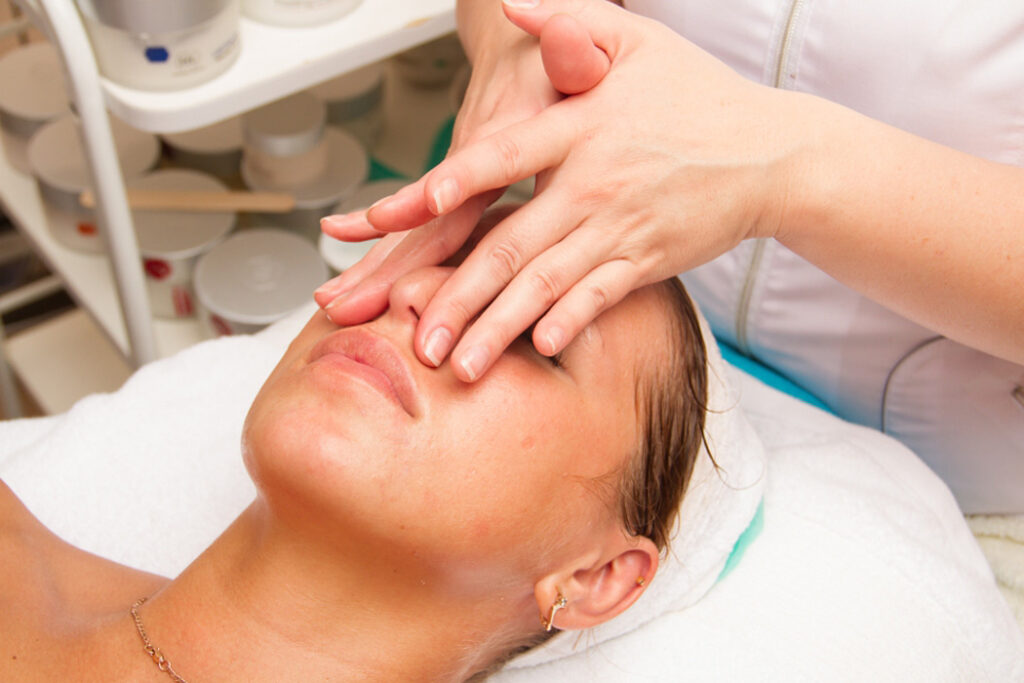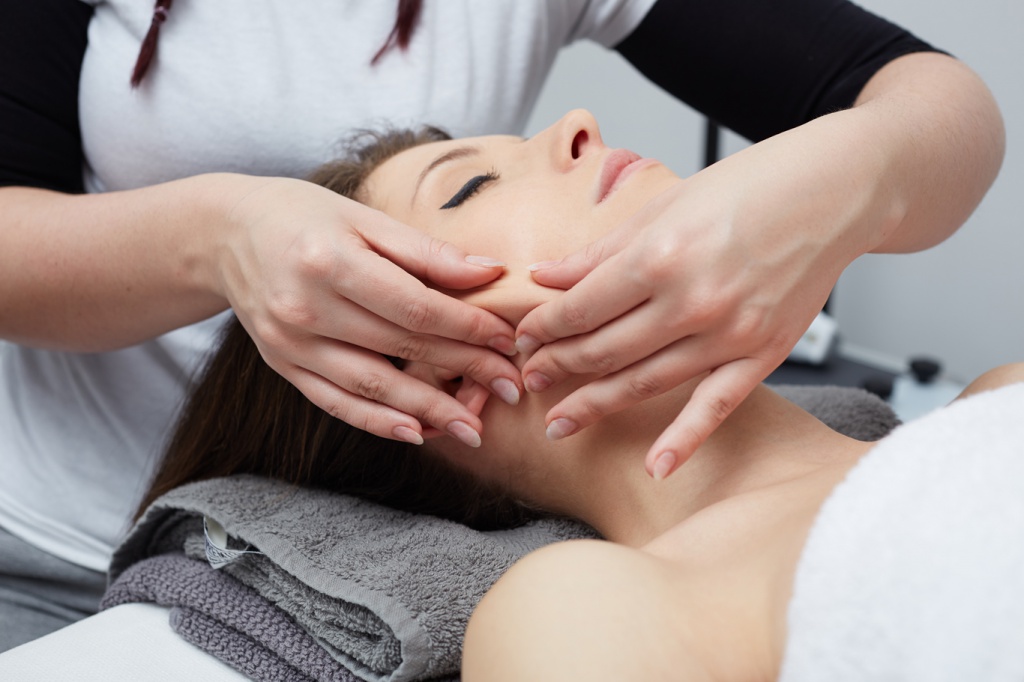Age-related changes, such as slowed metabolism and weakened immunity, can manifest visibly on our faces. Traditional remedies like Botox offer temporary relief but come with health risks and the need for frequent upkeep. However, there’s a safer, longer-lasting solution that doesn’t compromise your well-being: myofascial facial massage.
Unlike conventional methods that target muscles, myofascial massage focuses on the fascia – the connective tissue between muscles. By addressing spasms and tension in the fascia, this technique revitalizes the skin from within, promoting lymph and blood flow, and enhancing nutrient delivery to cells.

Table of Contents
Understanding Myofascial Facial Massage
Myofascial massage operates on the principle of releasing tension and restoring balance within the fascial system. Fascia, often described as a web-like network of connective tissue, plays a vital role in supporting and shaping our muscles. When tension builds up within the fascia, it can restrict movement, impede circulation, and contribute to visible signs of aging such as wrinkles and sagging skin.
During a myofascial facial massage session, a skilled practitioner utilizes gentle yet effective techniques to manipulate the fascia, releasing areas of tightness and promoting relaxation. Through kneading, stretching, and targeted pressure, the therapist encourages the fascia to return to its natural state of elasticity, allowing for improved mobility and function of underlying muscles.
The Transformative Effects of Myofascial Facial Massage
- Wrinkle Elimination: By relaxing facial muscles and promoting circulation, myofascial massage helps smooth out wrinkles, restoring a youthful appearance. The gentle manipulation of the fascia encourages collagen production, which plumps up the skin and reduces the appearance of fine lines and creases.
- Youthful Skin: Renewed blood flow and lymphatic drainage contribute to a youthful glow, reducing puffiness and revitalizing tired skin. As stagnant fluids are flushed away, the complexion appears brighter and more radiant, reflecting improved overall health and vitality.
- Enhanced Circulation: Improved blood circulation means better oxygenation and nutrient delivery to skin cells, fostering a healthy complexion. By encouraging the exchange of oxygen and nutrients at the cellular level, myofascial massage supports the skin’s natural regeneration process, resulting in improved tone and texture over time.
- Skin Firmness and Elasticity: Regular sessions stimulate collagen and elastin production, leading to firmer, more elastic skin. Collagen and elastin are essential proteins that provide structural support to the skin, helping to maintain its firmness and resilience against the effects of aging and environmental stressors.
- Relaxed Facial Muscles: Targeting areas like the jawline and nasolabial folds, myofascial massage eases muscle tension, promoting relaxation and a more defined facial contour. By releasing tension in the muscles of the face and neck, the treatment helps to alleviate symptoms of stress and fatigue, restoring a sense of balance and well-being.
- Natural Collagen Boost: Unlike invasive procedures, myofascial massage stimulates the body’s natural collagen production, ensuring long-term benefits. By harnessing the body’s innate healing mechanisms, the treatment offers a sustainable approach to anti-aging skincare, promoting lasting results without the need for synthetic fillers or injections.

Contraindications and Precautions
- Rosacea: Massage can exacerbate symptoms of rosacea, leading to increased redness and inflammation.
- Viral Infections: Active infections such as herpes can spread through direct contact, posing a risk of transmission during massage.
- Skin Conditions: Open wounds, lesions, or severe dermatitis may be aggravated by massage, causing discomfort and potential complications.
- Allergies: Individuals with known allergies to massage oils or skincare products should inform their therapist to avoid allergic reactions.
- Inflammatory Disorders: Conditions such as rheumatoid arthritis or lupus may cause heightened sensitivity, making massage therapy uncomfortable or even harmful.
- Recent Surgeries: Patients recovering from surgery should consult with their healthcare provider before undergoing massage therapy, as it may interfere with the healing process.
Conclusion
In a world inundated with quick fixes and invasive procedures, myofascial facial massage stands out as a beacon of holistic skincare. By targeting the root cause of aging – tension and stagnation within the fascial system – this gentle yet powerful therapy offers a natural alternative to traditional interventions.
Through the skilled hands of a trained practitioner, myofascial massage unlocks the body’s innate healing mechanisms, promoting circulation, stimulating collagen production, and restoring balance to the facial muscles and connective tissues. The results are not just skin-deep; they permeate every layer of our being, fostering a sense of rejuvenation and well-being from within.
As we navigate the complexities of modern life, it’s easy to overlook the simple yet profound benefits of self-care. Myofascial facial massage serves as a reminder that true beauty emanates from a place of harmony and vitality – a state achievable through nurturing our bodies and honoring the wisdom of nature.
References
- Myers, T. W. (2013). Anatomy Trains E-Book: Myofascial Meridians for Manual and Movement Therapists. Elsevier Health Sciences.
- Carla Stecco, Julie Ann Day. The Fascial Manipulation Technique and Its Biomechanical Model: A Guide to the Human Fascial System
- Guzmán-Venegas, R. A., Cortés, N., & Silva-Hernández, S. (2018). Manual Therapy on Tissue Tone and Pressure Pain Threshold in Persons With Latent Myofascial Trigger Points in the Upper Trapezius Muscle: A Randomized Controlled Trial. Journal of Manipulative and Physiological Therapeutics, 41(5), 381–388. [DOI: 10.1016/j.jmpt.2018.01.003]
- Kubo, K., Yajima, H., Takayama, M., Ikebukuro, T., & Mizuno, K. (2017). Effects of Transcutaneous Electrical Nerve Stimulation on Myofascial Pain, Pain Catastrophizing, and Pressure Pain Sensitivity in Patients with Myofascial Pain Syndrome: A Randomized Controlled Pilot Study. Pain Research and Treatment, 2017, 2987146. [DOI: 10.1155/2017/2987146]
- Macgregor, J. L., Michael, S., & Zaleski-Larsen, L. (2019). The effects of instrument-assisted soft tissue mobilization compared to other interventions on pain and function: a systematic review. Physical Therapy Reviews, 24(5), 255–267. [DOI: 10.1080/10833196.2019.1664733]
- Martins, W. R., Blasczyk, J. C., de Oliveira, A. K., de Melo, M. A. P., & Bonini-Rocha, A. C. (2017). Immediate effects of ultrasound-guided interstitial release technique on hamstring extensibility: A randomized controlled trial. Journal of Bodywork and Movement Therapies, 21(3), 715–720. [DOI: 10.1016/j.jbmt.2017.01.015]